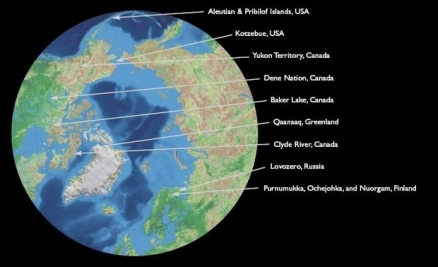Hunting, herding, fishing, and gathering: indigenous peoples and renewable resource use in the Arctic
This is Chapter 12 of the Arctic Climate Impact Assessment
Lead Author: Mark Nuttall; Contributing Authors: Fikret Berkes, Bruce Forbes, Gary Kofinas,Tatiana Vlassova, George Wenzel
This chapter discusses the present economic, social, and cultural importance of harvesting renewable resources for indigenous peoples, provides an assessment of how climate change has affected, and is affecting, harvesting activities in the past and in the present, and considers what some of the future impacts may be. Key to this chapter are several detailed case studies based on extensive research with indigenous communities in a number of arctic settings.These case studies discuss past, present, and potential impacts of climate change on specific activities and livelihoods. It is not possible to provide circumpolar coverage of the situation for all indigenous peoples, as detailed descriptions are not available for all regions of the Arctic. The material presented in this chapter, however, does illustrate some of the common challenges faced by indigenous peoples in a changing Arctic.
One aim of this chapter is to assess the adaptive strategies that have enabled communities to respond to and cope with climate change in the past, and to assess to what extent these options, if any, remain open to them. While there are few data available on this topic, research shows that while indigenous peoples have generally adapted well to past climate change, the scale, nature, and extent of current and projected climate change brings a very different sense of uncertainty, presenting different kinds of risks and threats to their livelihoods and cultures. The chapter also points to pressing research needs. Compared to the extensive scientific literature on climate change considered in most other chapters in this assessment, data on the impacts of climate change on the livelihoods of the Arctic’s indigenous peoples are limited, particularly in the case of the Russian North.
This chapter illustrates the complexity of problems faced by indigenous peoples today and underscores the reality that climate change is but one of several, often interrelating problems affecting their livelihoods and cultures. This chapter is, therefore, as much a scoping exercise, the beginning of a process, as it is an assessment of current knowledge. It emphasizes the urgency of extensive, regionally-focused research on the impacts of climate change on hunting, herding, fishing, and gathering activities, research that will contribute to a much greater understanding of climate change impacts, as well as to place these impacts within the much broader context of rapid social, economic, and environmental change.
Chapter 12. Hunting, Herding, Fishing, and Gathering: Indigenous Peoples and Renewable Resource Use in the Arctic
12.1 Introduction (Hunting, herding, fishing, and gathering: indigenous peoples and renewable resource use in the Arctic)
12.2 Present uses of living marine and terrestrial resources
12.2.1 Indigenous peoples, animals, and climate in the Arctic
12.2.2 Mixed economies
12.2.3 Renewable resource use, resource development, and global processes
12.2.4 Renewable resource use and climate change
12.2.5 Responding to climate change
12.3 Understanding climate change impacts through case studies
12.3.1 Canadian Western Arctic: the Inuvialuit of Sachs Harbour
12.3.2 Canadian Inuit in Nunavut
12.3.3 The Yamal Nenets of northwest Siberia
12.3.4 Indigenous peoples of the Russian North
12.3.5 Indigenous caribou systems of North America
